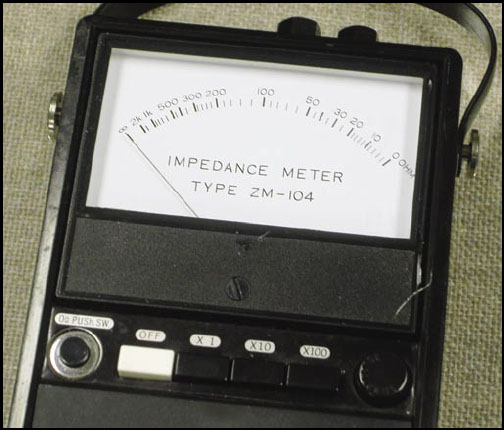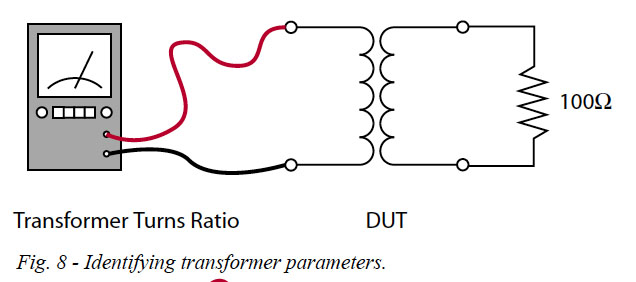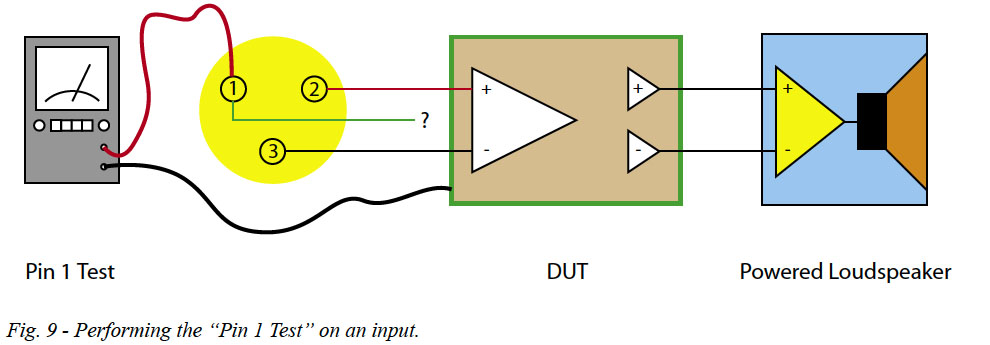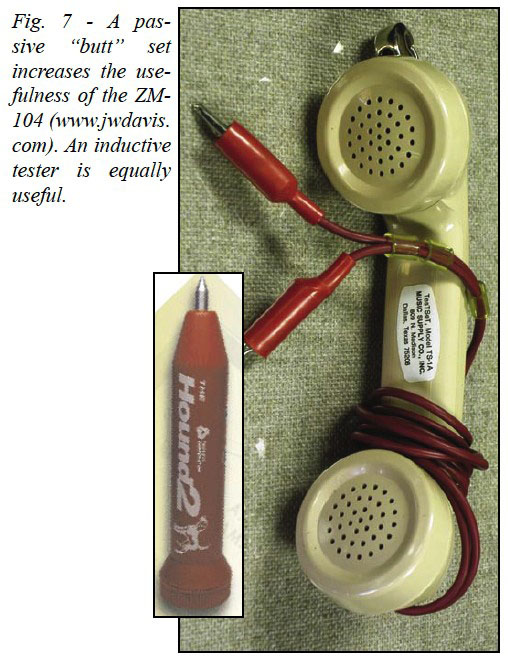
Transformer Tester
The turns ratio of a transformer can be found by connecting the ZM-104 across the primary and a known resistor value across the secondary (Figure 8).
If the measured impedance is the same as the known resistor, then the transformer has a 1:1 turns ratio.
If the impedance is higher than the known resistor, then the transformer is a “step-up” model. If the impedance is lower than the known resistor, the transformer is a “step down” model.
Wire Pair Identification
The individual pairs in multi-pair “snake” cables can be identified by connecting the ZM-104 to a twisted pair, and then “sniffing” the other end with an inductive tracer (Fig. 7). These tracers are available at electronics and home supply stores.

Pin 1 Tester
Many audio products have the internal audio ground connected to “pin 1” of their input and/or output connectors (Figures 9 and 10).
This is a bad practice (it causes hum and buzz) and it needs to be identified and corrected. “Pin 1 problems” can be found by connecting one lead of the ZM-104 to chassis and the other lead to pin 1 of each I/O connector.
If this connection produces an audible tone from the unit, then the shield of the connecting cable should be lifted or routed directly to the chassis with a jumper.

The ZM-104 sources about 20ma on the x1 setting. This is enough current to identify the problem but not enough to damage any internal components, etc. See AES Journal Reprint June 1995 Grounds and Shields for more information.
Impedance
Oh yes, the ZM-104 can actually be used for what it was designed for – measuring impedance. The 1kHz tone is perfect for checking the impedance of any input or output of an electronic audio component.
Keep in mind that loudspeakers have complex impedance curves, but the 1kHz impedance measurement can at least reveal whether the voice coil has continuity, or whether a loudspeaker line is open or shorted.
These are by far the most common fault conditions for installed and portable loudspeakers.
If you need to know the minimum impedance of a loudspeaker (this is usually the parameter of interest when loading amplifiers and selecting cable) then use your ohm meter across the loudspeakers terminals.

This will measure the DC resistance of the transducer, which is typically the low spot on an impedance curve.
Note that transformers and capacitors will not pass DC, so if you need to know the impedance of such devices you can simply measure the current with a know voltage applied and calculate it using Ohm’s law (Figure 1).
In this age of computers, DSP and wireless communications, don’t overlook the time-proven fundamental tools of our trade. The mark of a good audio technician isn’t having the latest gear, it’s knowing how to get the answer with the tools that are available.
